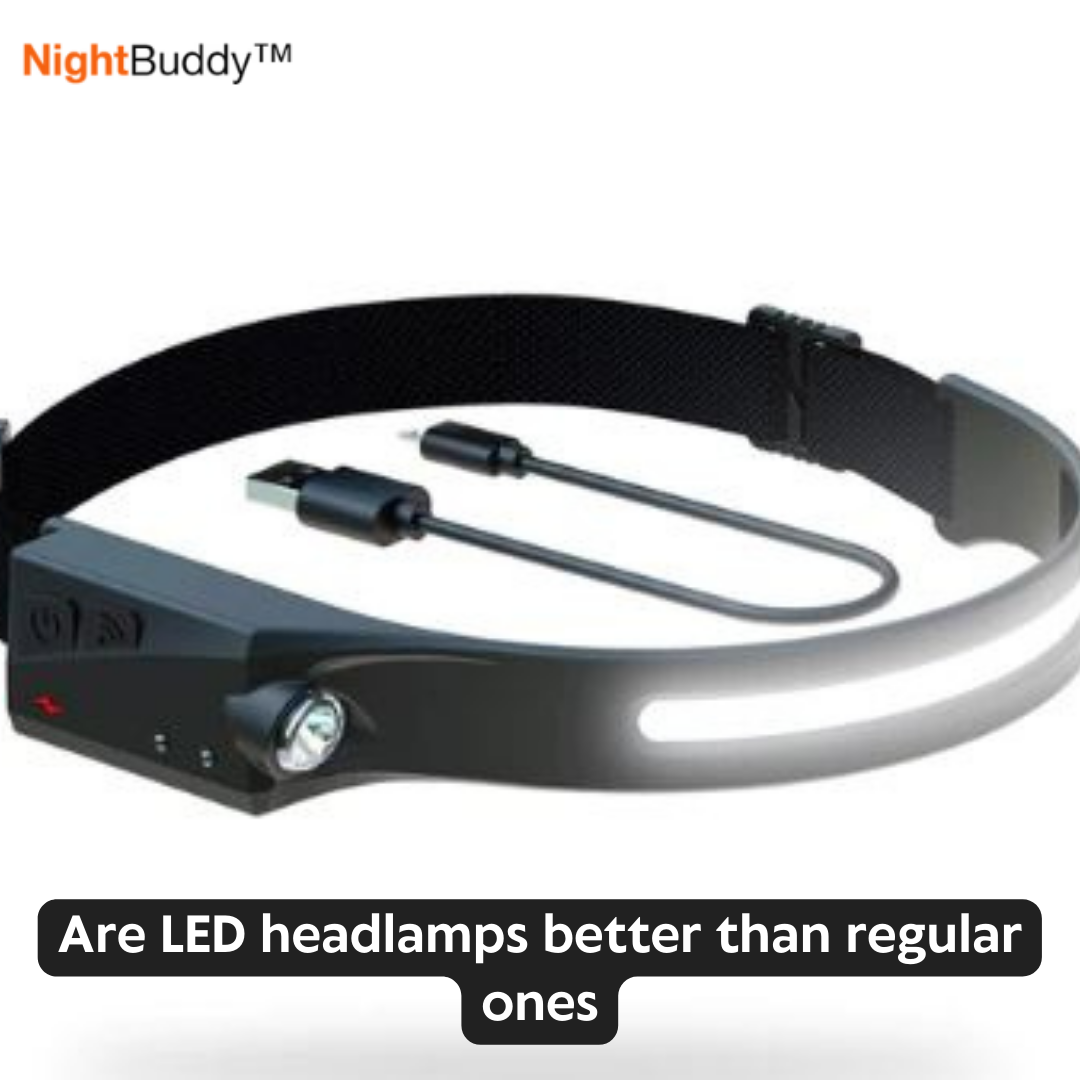Headlamps are essential equipment for outdoor activities, including camping, hiking, running, and cycling. They provide much-needed illumination for users, allowing them to navigate in low-light conditions.
Headlamps come in different types, including LED and regular headlamps, with each having its pros and cons. This article explores the differences between LED and regular headlamps to help you decide which one is better.
What are LED Headlamps
LED headlamps are headlamps that use Light Emitting Diodes (LEDs) as the primary source of illumination. LED bulbs are semiconductor devices that emit light when an electric current passes through them. LED headlamps are designed to provide a bright and efficient whiter light source that can be used for various outdoor activities.
Compared to traditional headlamps that use incandescent bulbs, LED headlamps are more energy-efficient, durable, and can provide brighter lights and more consistent illumination. They are available in various colors and brightness levels, making them a popular choice for outdoor enthusiasts, runners, hikers, and campers. A good example of LED headlamps is the NightBuddy™ 230º LED Headlamp.
Pros of LED Lights and Headlamps

LED headlamps have become increasingly popular in recent years due to the numerous advantages they offer over regular headlamps. Currently, there are so many types of headlamps on the market for you to choose from. However, be keen to choose only the best quality. NightBuddy offers best quality headlamps and other lighting solutions for you. Here are some of the advantages of LED headlamps:
#1. Energy Efficiency
LED bulbs are highly energy-efficient and have less energy consumption thus use less power than traditional incandescent bulbs. This means that LED headlamps can last much longer on a single battery charge or set of batteries compared to regular headlamps. In fact, LED bulbs can last up to 100,000 hours, while regular bulbs typically last around 10,000 hours.
#2. Brightness
LED headlamps have generally brighter output than regular headlamps and provide better illumination in low-light conditions. LED bulbs can produce a focused beam of light that is brighter and more consistent than the light produced by incandescent bulbs. Additionally, LED headlamps are available in various brightness levels and colors, making them more versatile for different outdoor activities.
#3. Durability
LED headlamps are more durable than regular headlamps and can withstand more wear and tear. LED bulbs are more resistant to impact and vibration, making them less likely to break or burn out compared to incandescent bulbs. Additionally, LED headlamps are often designed with rugged materials that can resist moisture, dust, and extreme temperatures, making them more reliable for outdoor activities.
#4. Lightweight
LED headlamps are generally lighter than regular headlamps, which makes them more comfortable to wear for extended periods. LED bulbs are smaller and more compact than incandescent bulbs, which allows manufacturers to design headlamps that are more streamlined and ergonomic.
#5. Eco-friendly
LED headlamps are more eco-friendly than regular headlamps because they use less energy and produce less heat. This means that they generate fewer greenhouse gases and have a lower carbon footprint. Additionally, LED bulbs are 100% recyclable, making them a more sustainable option for consumers who are conscious of their environmental impact.
Read more: NightBuddy Headlamps Complete Review
What are Regular Headlamps

Regular headlamps, also known as traditional or incandescent headlamps, use a filament bulb as the primary source of illumination. These bulbs work by heating a filament inside the bulb until it glows, producing light. Regular headlamps are commonly found in hardware stores and outdoor retailers and are a more affordable option compared to LED headlamps.
However, they are generally less efficient, less durable, and produce less bright light than LED headlamps. Regular headlamps are still widely used for various outdoor activities, including camping, hiking, and fishing, among others.
Advantages of regular halogen lights
While LED headlamps are becoming more popular, regular headlamps still offer several advantages over their LED counterparts. Here are some of their advantages:
#1. Affordability
Regular headlamps are generally more affordable than LED headlamps, making them a popular choice for consumers who are on a budget.
#2. Widely available
Regular headlamps are widely available in hardware stores and outdoor retailers, making them easier to find compared to LED headlamps, which are often sold at specialty stores or online.
#3. Warm light
Regular headlamps produce a warmer, more natural-looking light compared to the cooler light produced by LED light bulbs. Some people prefer the warm light of regular headlamps, especially for camping or other outdoor activities that require a cozy or intimate atmosphere.
#4. Compatibility
Regular headlamps are often compatible with a wider range of batteries, including rechargeable and non-rechargeable batteries, making them more versatile for different situations.
#5. Easy to use
Regular headlamps are generally simpler and easier to use compared to LED headlamps, which may have more advanced features or settings that require more expertise to operate.
Drawbacks of Regular Headlamps and Why LED Headlamps are better

Regular headlamps have several drawbacks compared to LED headlamps, including:
#1. Energy inefficiency
Regular headlamps are less energy efficient compared to LED headlamps, which means they consume more power and require more frequent battery changes. This can be inconvenient and costly, especially during extended camping or hiking trips where battery replacement may not be easily available.
#2. Shorter lifespan
Regular headlamp bulbs have a shorter lifespan compared to LED bulbs, which means they need to be replaced more frequently. This can be frustrating and costly, especially if the headlamp is used frequently.
#3. Limited brightness
Regular headlamps are generally not as bright as LED headlamps and may not provide adequate illumination in low-light conditions. This can be a safety issue, especially when navigating uneven terrain or performing tasks that require precise vision.
#4. Durability issues
Regular headlamps are typically less durable than LED headlamps and may be more susceptible to damage from impacts, water, and extreme temperatures. This can be a concern for outdoor enthusiasts who require a reliable light source in challenging environments.
#5. Heat production
Regular headlamps produce more heat compared to LED headlamps, which can be uncomfortable for the user and may cause the headlamp to overheat and fail.
While they may be more affordable and easier to use than LED headlamps, their limitations can be significant, especially for those who rely on them for outdoor activities.
Which Headlamp Should You Choose?
In conclusion, LED headlamps are generally better than regular headlamps due to their longer lifespan, energy efficiency, brighter illumination, durability, and lightweight design.
However, they are also more expensive and can produce harsh light, so you should consider these factors when making your choice. Ultimately, the best headlamp for you will depend on your specific needs and preferences.





Leave a comment
This site is protected by hCaptcha and the hCaptcha Privacy Policy and Terms of Service apply.